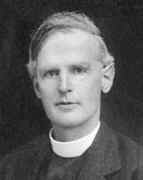Person: Young (4), Alfred

Alfred Young was an English mathematician who worked in group theory. Both Young diagrams and Young tableaux are named after him.
Mathematical Profile (Excerpt):
- After being educated at home with a private tutor, who also taught the sons of Edward Young's first marriage, Alfred went to Monkton Combe school near Bath.
- It was at this school that the extent of Alfred's talents in mathematics were recognised.
- Entering Clare College in 1892, Young combined sporting and academic interests.
- By his third year Young had begun to undertake research in mathematics and although this proved a good start to his mathematical career, it was not the best way to prepare for the Mathematical Tripos examinations.
- Young was appointed as a lecturer in Selwyn College, Cambridge in 1901.
- In 1908 Young was ordained and became a Curate at Christ Church, Hastings.
- in a typical country rectory, set in an old world garden full of colour and of great charm, where a warm welcome awaited a visitor from Cambridge or elsewhere, young or old, who sought out in this secluded corner of Essex a master of abstract algebra, and found more than a mathematician, a friend.
- In 1926 Young began to lecture again at Cambridge.
- W L Edge attended Young's lecture course which began in January of that year.
- At the end of the last lecture in March, Young said that he was so pleased that people had turned up that he would lecture again in the following term.
- Young's work had, and continues to have, a major impact on the theory of groups, in particular on group representations.
- In 1900 he introduced 'Young tableau', the method for which he is best remembered.
- Burnside, Frobenius and Weyl saw the power of Young's methods.
- Burnside, as referee of Young's papers, suggested how the papers could be written to emphasise their impact on group theory and he pointed Young towards the papers of Frobenius and Schur.
- Young did not read German easily and it was some years before he fully understood the work of Frobenius.
- This resulted in a delay in Young obtaining results on the representation theory of the symmetric group.
- Frobenius used Young tableaux for the first time in 1903 when he investigated representations of the symmetric group but it was not until 1906 that Young learnt of Frobenius's applications of his methods.
- In 1927 Young published further work now extending what Frobenius had done and relating it to his own work.
- Weyl also began to make use of Young's ideas and Young tableau appear in his famous book Theory of groups and quantum mechanics.
- In 1934 Young realised the significance of the sequence in which the standard tableau can be written and the following year he again related his work to that of Frobenius and Schur.
- We should not give the impression that Young only contributed to group representations.
- Among the honours that Young received for his mathematical contributions we should mention that in 1931 he was awarded an honorary degree from the University of St Andrews and in 1934 he was elected a Fellow of the Royal Society of London.
Born 16 April 1873, Widnes, Lancashire, England. Died 15 December 1940, Birdbrook, Essex, England.
View full biography at MacTutor
Tags relevant for this person:
Group Theory, Origin England
Thank you to the contributors under CC BY-SA 4.0! 

- Github:
-

- non-Github:
- @J-J-O'Connor
- @E-F-Robertson
References
Adapted from other CC BY-SA 4.0 Sources:
- O’Connor, John J; Robertson, Edmund F: MacTutor History of Mathematics Archive
